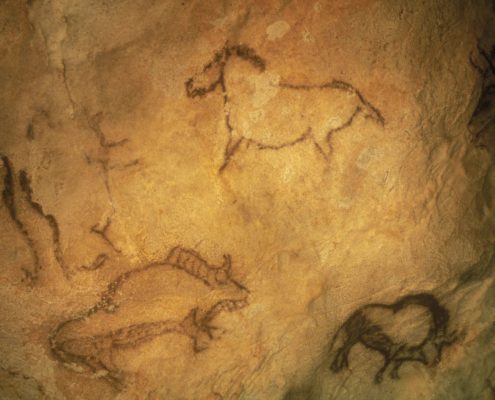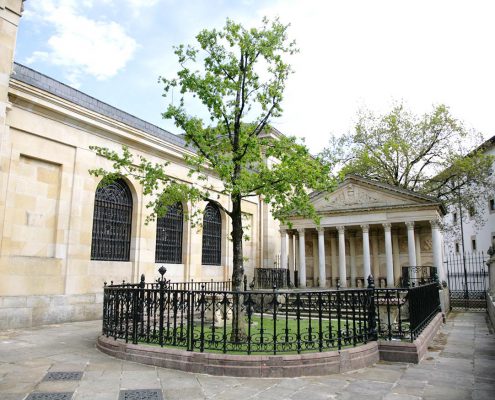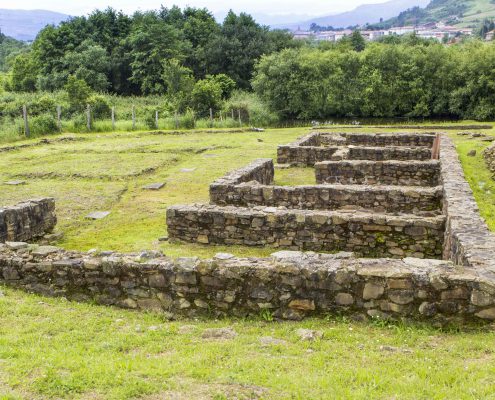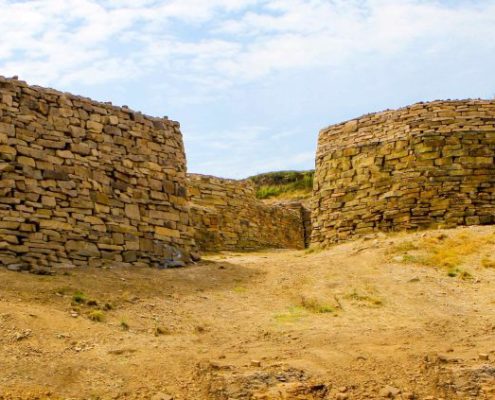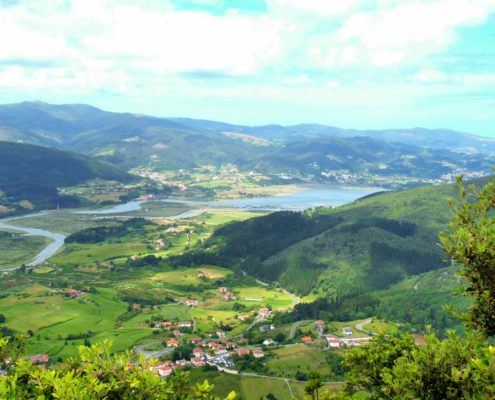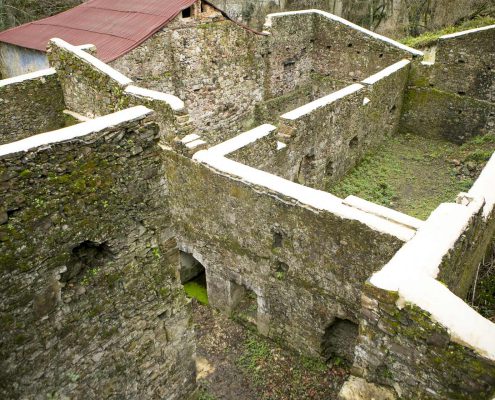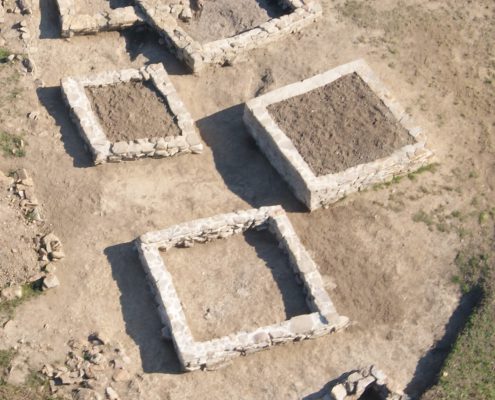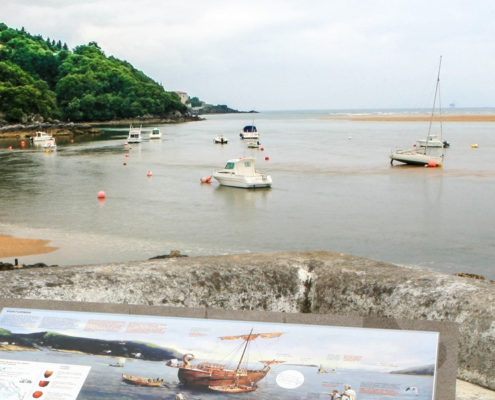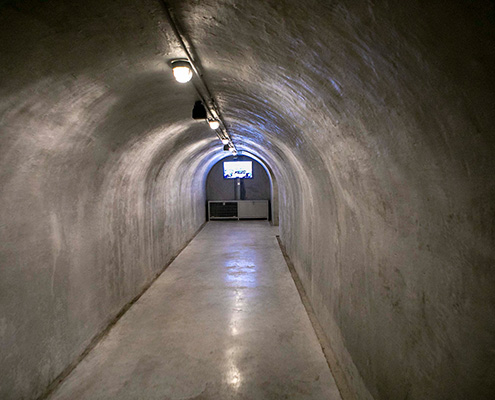HISTORICAL HERITGAGE
Santimamiñe Cave
This is the most important archaeological site in the Basque Country and a World Heritage Site. A cave that preserves remains of human settlements from over 14,000 years ago, around 50 cave paintings and numerous stalactite and stalagmite formations of great beauty. It is located in the municipality of Kortezubi near Guernica-Lumo. Read more
The Casa de Juntas and Tree of Gernika
This was the place where Basque politicians and lords met to decide the future of our town. And today it is the place where the Lehendakari is sworn into office. A pretty architectural complex full of history, the place where regional laws were established that turned Guernica into the cradle of Basque freedoms. Read more
Forua Historic Complex
This comprises San Martín de Tours Church and the Roman town. The Church is home to 2,000 years of history, constituting the archaeological space with the most complete historic sequence in Biscay. The temple is from the 16th century, but its interior is where we will find remains of a temple from a previous era, ancient necropolis and Roman era buildings. The installation on the ground of a glass platform allows us to enjoy these vestiges that were hidden for centuries.
San Martín de Tours Church is connected to the remains of the ancient Roman town of Forua, the main settlement created by Rome in Biscay. Established in the 1st century on a surface area of 14.8 acres, it was inhabited until the 5th century. A strategic site that encourages trade exchanges with other coastal cities in Cantabria and on the coast of Aquitaine. Guided visits are organised in summer.
Oppidum of Arrola
On the summit of Mount Arrola a fortress was built 2,300 years ago that sheltered the local population. An oppidum that shows the way of life of the Iron Age II, with monumental walls, doors and trenches. It is one of the most important fortified towns of eastern Cantabria. To learn more about it, you can also visit Arrolagune, its interpretation centre in the Loiola neighbourhood in Arratzu. Here you will find an exhibition with panels and illustrations, and a recreation of a life size cabin. Guided visits to the oppidum are organised in summer and you can visit Arrolagune Interpretation Center at weekends in the morning.
Arrolagune
Tel. 634 243 762
www.visiturdaibai.com
San Miguel de Ereñozar
Over the town of Ereño, in a privileged spot of unbeatable views, amidst the vestiges of its walls, landscape and legends, is the “Medieval summit” of San Miguel de Ereñozar. The hermitage is visible from almost every corner of the river of Mundaka and you can make out the mountains of Durangaldea from the summit of Ereñozar. There are guided visits to this summit in summer to relive one of the most unknown eras of our history. Archaeological research confirms a historic sequence from the Middle Ages to the present day. Its main elements are: a necropolis with different stages, a parish and a castle, which is no longer.
The ascent is relatively simple, except in the last section that has a steep slope. It is around a 40-minute walk from Ereño. In summer, you can enjoy guided visits to the site.
Urtubiaga Foundry
The passage of time has made the remains of the Urtubiaga Mill and Foundry in Ea merge into their pastoral environment. The walls, arches and ancient reservoirs rest after their industrial past as a source of wealth. Early references locate this industrial complex in the 15th century. Today they are monuments of cultural interest. A pretty trail that leaves the city of Ea takes you to the mill and foundry. A tour on foot, totally accessible and of great natural and cultural value that follows the paths of the ancient traditional way and the actual water channel of the ancient foundry
Roman Necropolis of Tribisburu
On Mount Sollube, at over 1,640 ft high, stands the Roman site of Tribisburu, a cremation necropolis used between the 1st and 3rd centuries. It comprises stone enclosures with a square floor, separated from each other by a narrow corridor, which reproduce the mausoleums used to store the remains of the deceased after cremation.
Portuondo Roman Port
A Roman settlement and possibly also a cabotage port. Roman pottery and bronze coins have been found here. To better understand the local landscape thousands of years ago, there are two panels, one at the jetty on Txatxrramendi Island and another on the padestrian walkway parallel to the train track. These panels show a recreation of the Roman port in what could have been its usual activity.
Air raid shelters
Guernica had several shelters, both public and private, with capacity for 3,000 persons. They have been preserved and two of them can be visited. The Astra shelter saved the lives of those who sheltered for more than four hours during the 1937 bombing. It was built from concrete with a domed roof, so that it was safer in the event of impact. This construction was “hidden” under a false roof that, from a bird’s perspective, looks like a house. Pasealeku shelter had tunnels that were 16 feet long and 6.6 feet wide and high. Here you can have a unique experience through the recreation of the bombing, using images and audio material.




